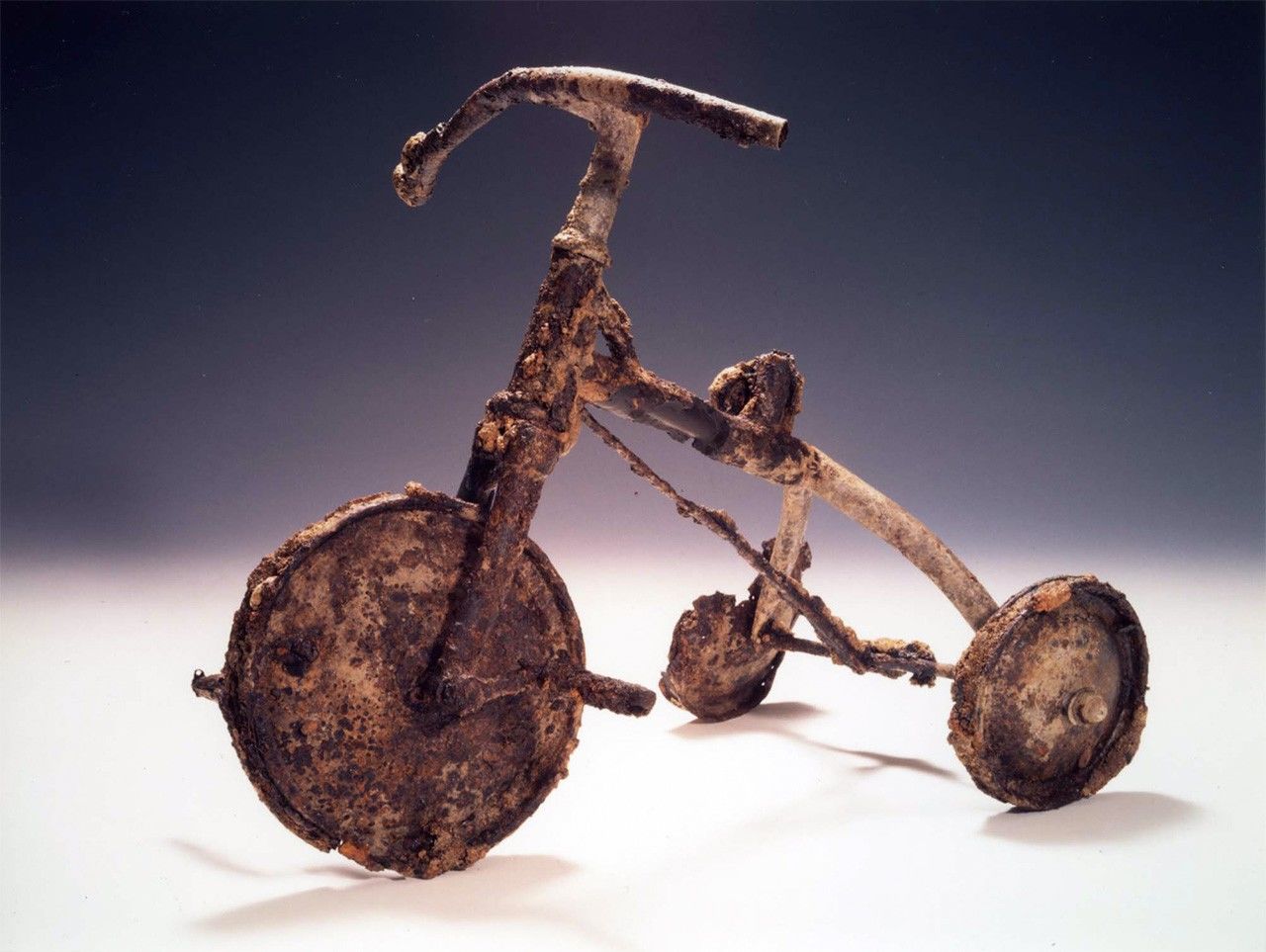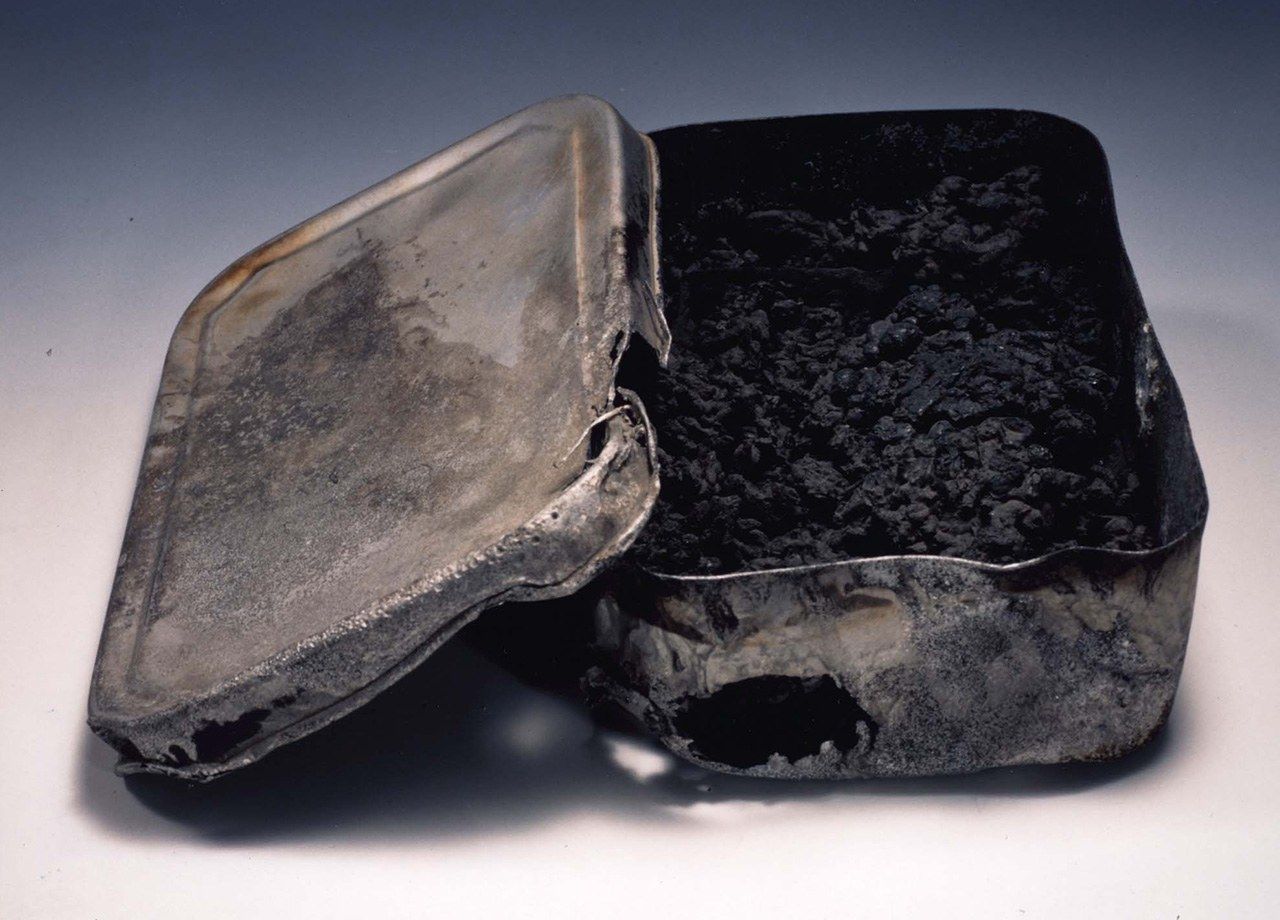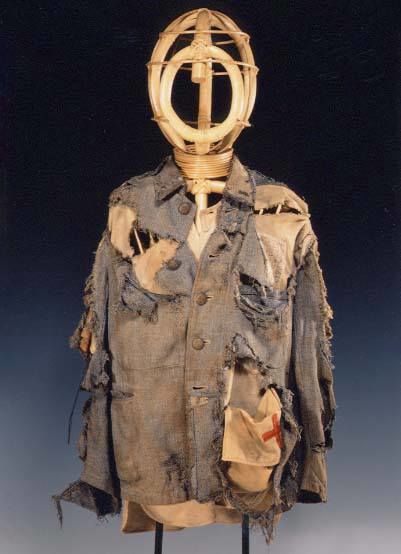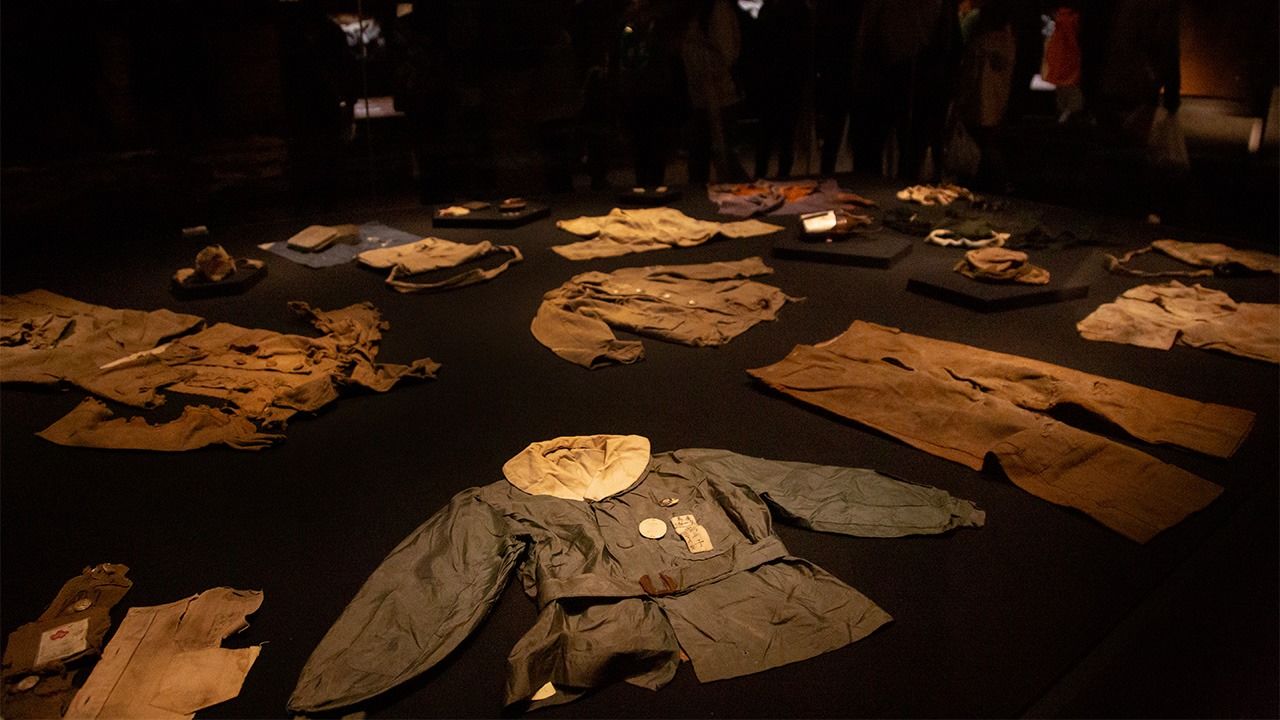
Hiroshima Welcomes the G7 Summit
Confronting the Reality of the Atomic Bombing at the Hiroshima Peace Memorial Museum
Society Politics- English
- 日本語
- 简体字
- 繁體字
- Français
- Español
- العربية
- Русский
At the center of the city of Hiroshima lies the Peace Memorial Park, home to the A-bomb Dome (also called the Genbaku Dome), the Cenotaph for the A-bomb Victims, and the Hiroshima Peace Memorial Museum’s main building, arrayed in a straight line, north to south. I visited this deeply symbolic site in early April 2023, and despite the light rain that fell, there was a line of visitors more than 50 meters long waiting to enter the museum. I was additionally surprised to see that around nine tenths of them appeared to be foreign tourists. A Hiroshima native who works as a volunteer guide told me, “It’s been some time since we’ve seen so many visitors from abroad here. We tend to see plenty of foreigners arrive during the cherry-blossom season, and in May and June they give way to domestic school tour groups.”
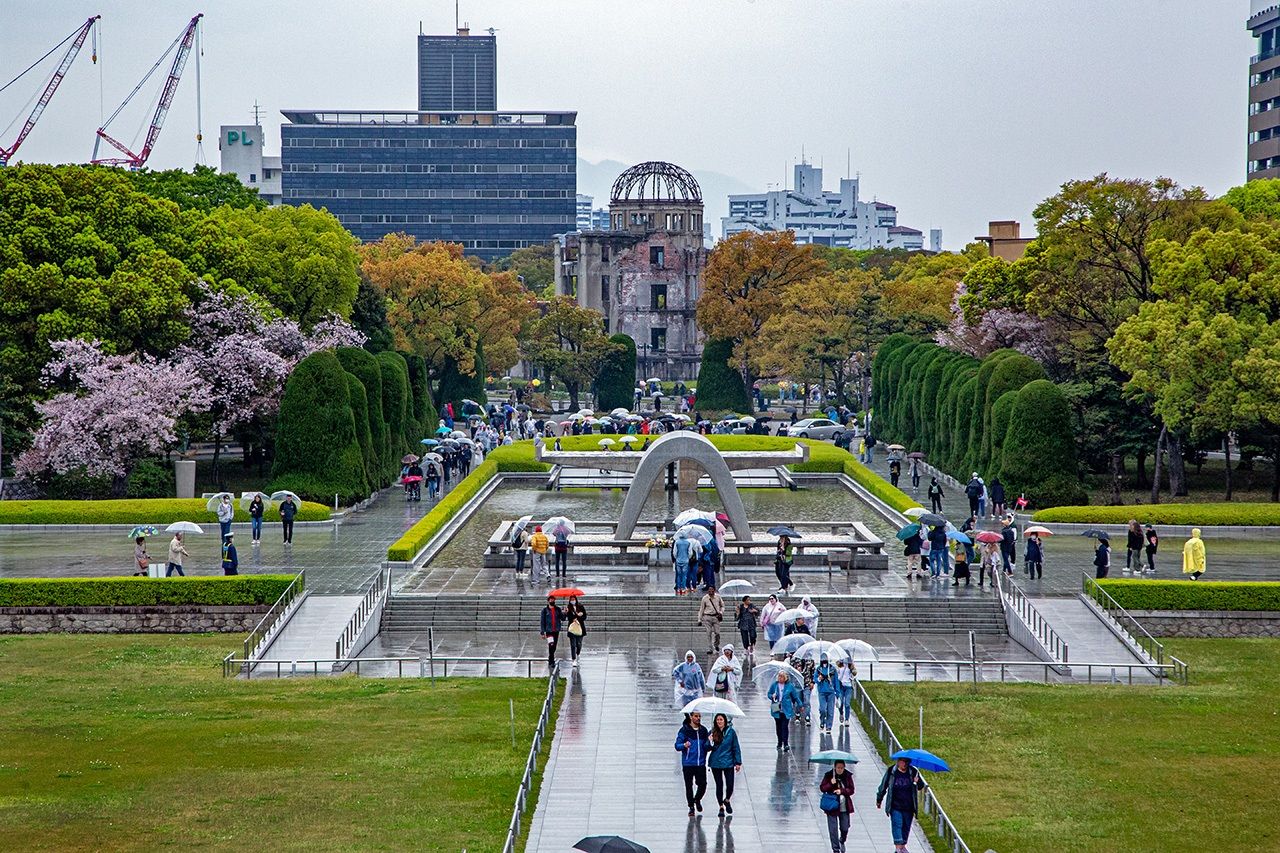
Looking north to the A-bomb Dome from the main museum building at the center of the park. (© Dōune Hiroko)
A New Focus on the Victims
In 2017–19, the museum underwent its biggest renovation ever since it opened in 1955. Tōya Toshihiro, deputy director of the institution, explains the reason for this lengthy work.
“Our primary goal was to position mementoes left behind by bomb victims and photos taken immediately after the bombing on August 6, 1945, at the core of the museum’s exhibits. In this way we place the focus on the human toll on the hibakusha. We describe our mission as ‘to tell the truth about the bombing,’ which means presenting the horrible spectacle that unfolded that day beneath the mushroom cloud. Conveying this is the central part of our work here.”
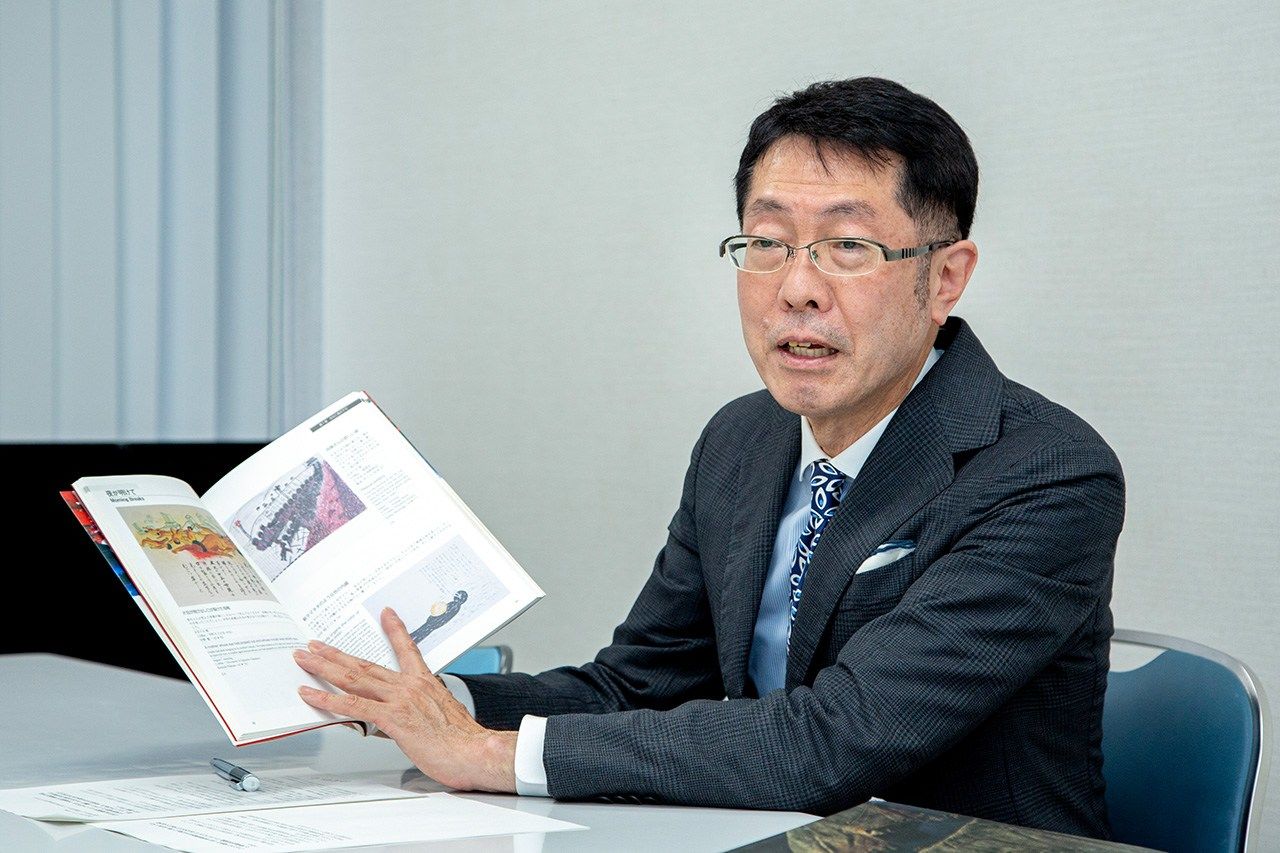
Museum Deputy Director Tōya Toshihiro describes the institution’s mission. (© Dōune Hiroko)
The image of that mushroom cloud, captured from the air by the US military after the bomb was dropped, is likely one of the first that comes to mind for many thinking about the atomic bombing of Hiroshima. Others will consider first the immense power of the atomic weapon, or its capacity for explosive destruction. The museum in its new form, though, views the event from the perspective of those on the ground, the human beings who were impacted by the bomb and its aftermath.
This required rearranging the order in which visitors arrive at the museum’s various sections, says Tōya. “Our Japanese visitors spend an average of 40 to 45 minutes in the museum. Previously, we were sending them first through exhibits on the development of the bomb and the events leading up to its deployment, and many visitors never even made it as far as the belongings of the bomb victims or the materials on the attack’s impact on human bodies.” Now, he explains, the Introductory Exhibit space that greets visitors first is composed simply of panoramic photographs of Hiroshima as it looked before and immediately after the bombing and a computer-graphic display of the bomb’s dropping and explosion, confronting them right away with the “reality of the atomic bombing.”
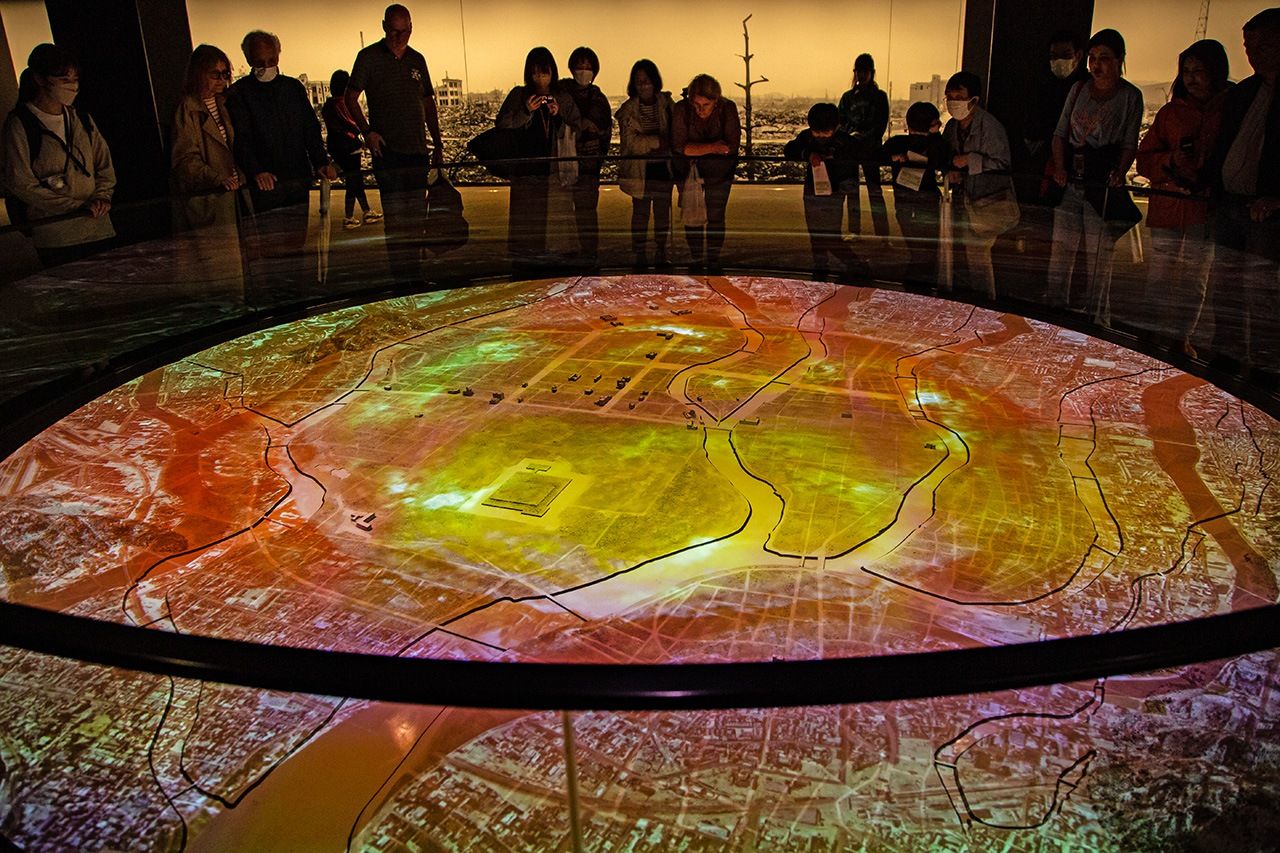
Visitors watch the computerized re-creation of the bombing in the Introductory Exhibit space. (© Dōune Hiroko)
Telling the Terrifying Story of August 6
The photographs that appear on the panels that visitors see first upon entering the main building are an encapsulation of the “perspective of the victims” that the museum seeks to present. The photojournalist Matsushige Yoshito snapped these two famous shots at around 11:00 on the morning of August 6, 1945, just three hours or so after the bomb went off, near the Miyuki Bridge 2.3 kilometers south from ground zero. The people in his photos are covered head to toe in severe burns, and their hair has been charred off. The roof tiles and windows of the structure standing behind them have been blown away. Museum officials designed the scale at which these images are presented to be the most realistic for viewers. In this museum section, the photos of the mushroom cloud were all taken from the ground, rather than from US military aircraft; the focus is on presenting the event as its victims saw it.
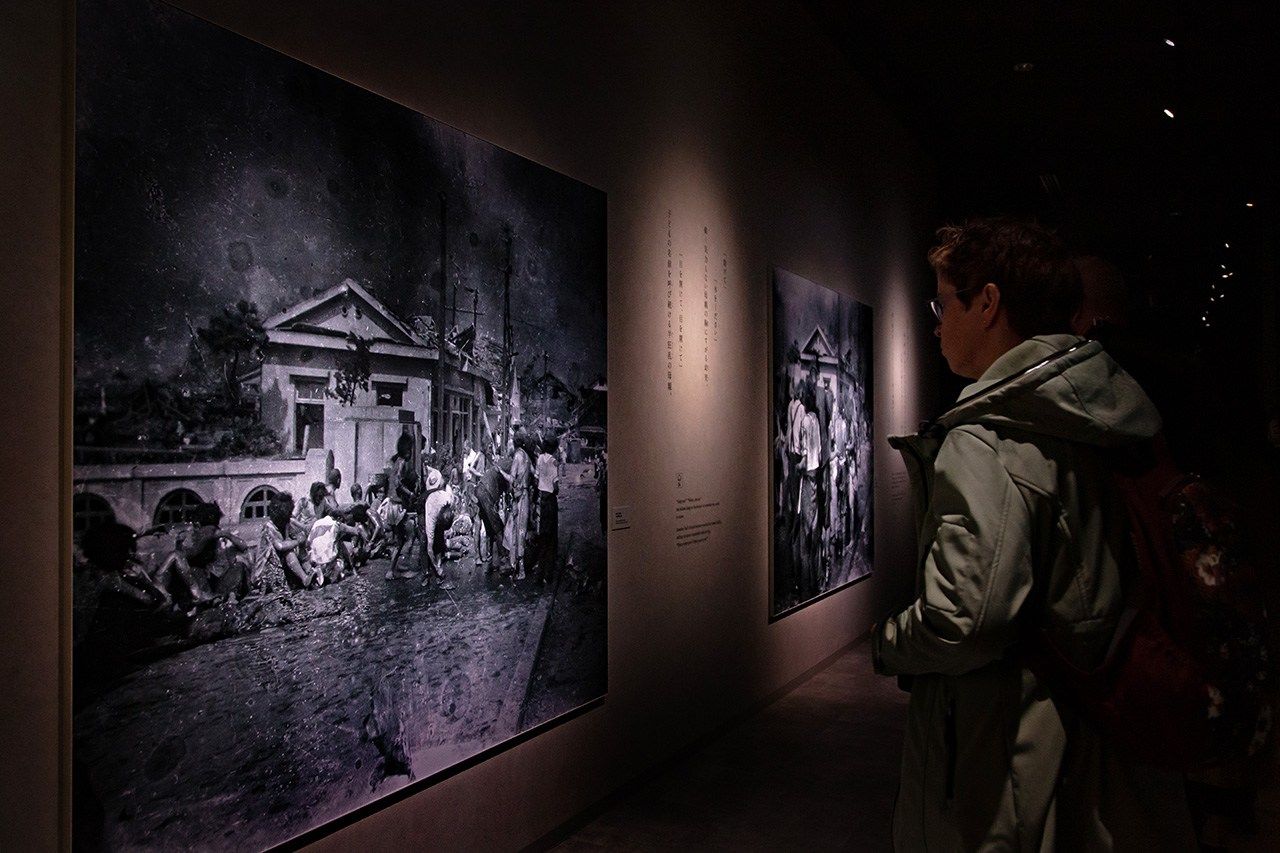
Viewing Matsushige Yoshito’s photographs. (© Dōune Hiroko)
Another section of the museum worth particular attention is the “Devastation on August 6” exhibit. Large pieces including brick walls from blasted structures, walls with shards of glass embedded in them, twisted iron girders, and lumps of metal melted in the searing heat of the blast set the scene here. Interspersed among them are images created by victims of what they saw that day; in a glass case at the hall’s center lie more than 30 items of clothing and other belongings carried by young students who lost their lives while working on building demolition that morning. No explanations accompany these items, leaving visitors to ponder for themselves where they came from and what significance they might have.
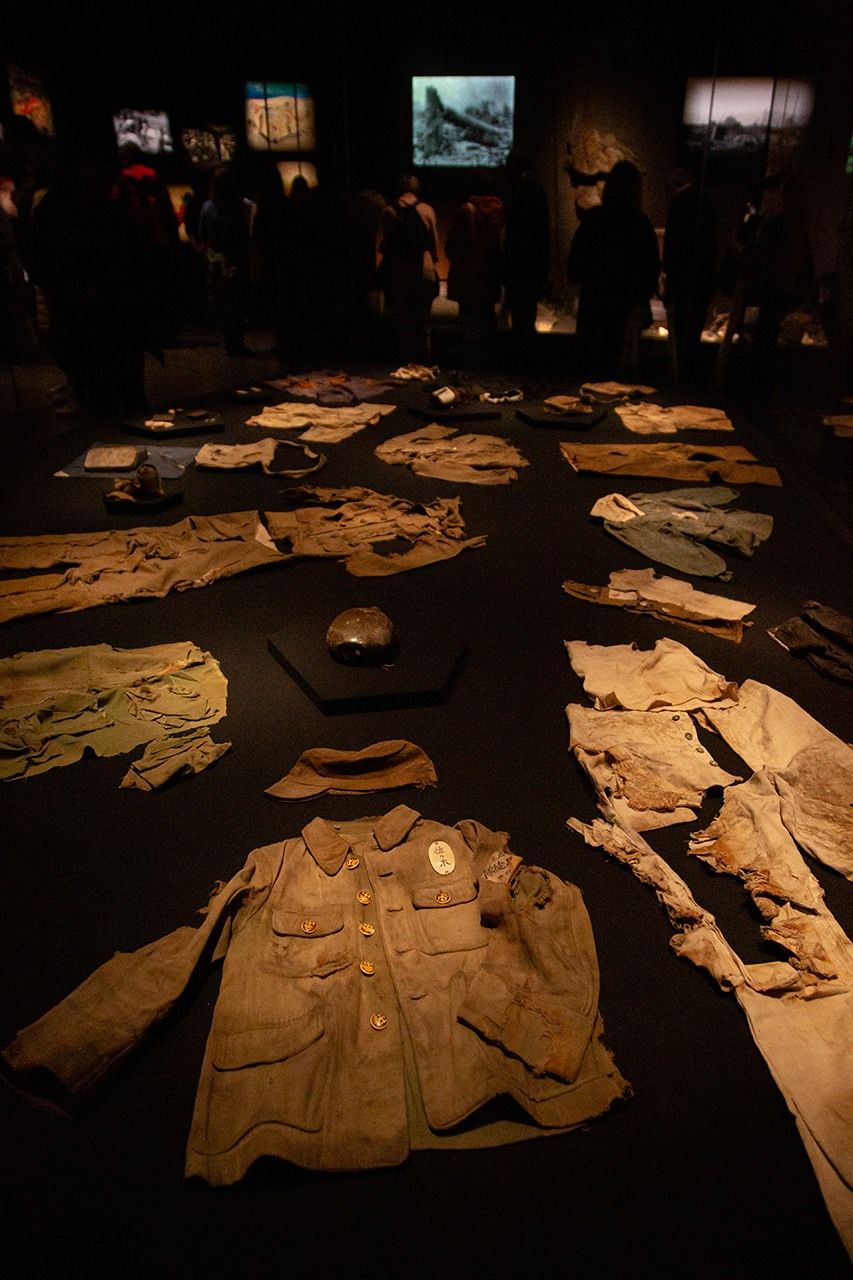
Clothing and other items from the bodies of fallen students are on display. (© Dōune Hiroko)
A Story for Every Victim
Farther along the museum’s recommended route is the “Cries of the Soul” exhibition space, which displays images of individual victims along with their belongings as a means of shedding light on the lives they each led in Hiroshima until that day. (A number of these items have been gathered in a children’s illustrated book, along with the stories associated with them, making them famous throughout Japan.) The pain the victims suffered and the deep sorrow of those who survived them are on full display in this impactful part of the museum.
A few of these items are described below.
The museum also houses an exhibit of materials related to the radioactive “black rain” that fell on the city from the mushroom cloud and Sasaki Sadako, who was exposed to the rain as a toddler and died a decade later from leukemia at age 12. Sasaki’s story would inspire the construction of the Children’s Peace Monument just south of the A-bomb Dome.
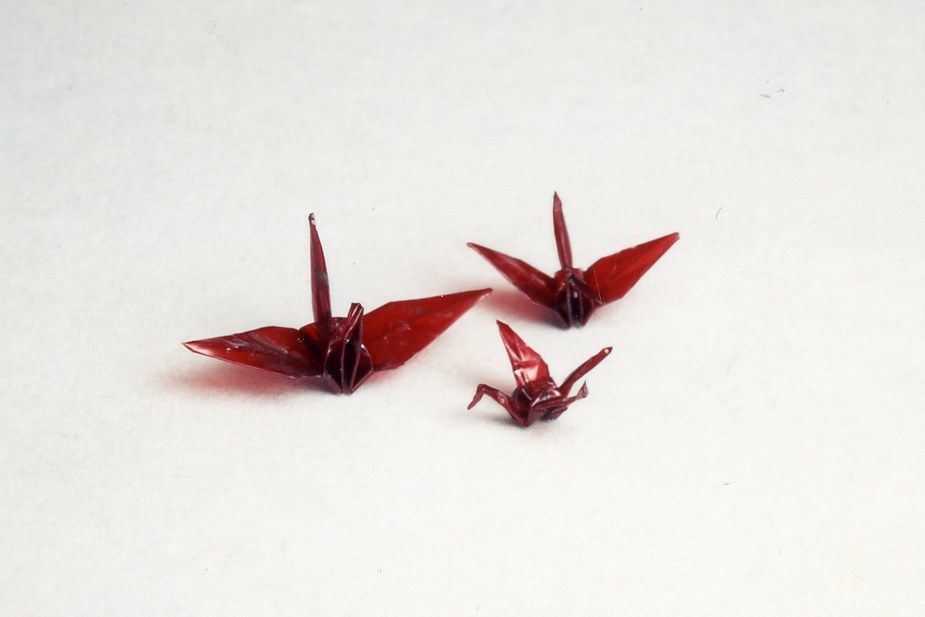
Origami cranes folded by Sasaki Sadako from paper wrappers that had contained her medicine. From the collection of the Hiroshima Peace Memorial Museum. Donated by Umeda Yoriko.
An Ever-Growing Collection
The Hiroshima Peace Memorial Museum’s collection today spans some 20,000 items. These include everything from stones, roof tiles, and other parts of structures damaged in the blast to items belonging to victims of the bomb, drawings and paintings of the bombing and its aftermath created by hibakusha, medical equipment used to treat them at the time, and even keloid scars and other samples of human tissue gathered from the exposed. Surprisingly, this collection continues to grow to this day, nearly eight decades on, with some 50 or 60 donations coming in annually from ordinary families.
In many cases, the children or grandchildren of victims who hold on to mementoes of those ancestors approach museum officials, concerned that the items will be scattered and lost once they pass on. One unusual donation that came in recently was a detailed family album from a family of six who operated a barber shop near ground zero and all perished in the blast. The father of the family, an avid photographer, had sent the album with its numerous photos to a relative’s home, fearing that it would be lost to flames in air raids on the city.
“Unless there’s some extraordinary reason not to,” says Deputy Director Tōya, “when survivors or descendants come to us with an offer, we carefully interview them and add their donations to our collection. Our mission is to share as many of these items as possible with visitors, ensuring that memories of the atomic bombing will never fade.”
Looking for Political Leadership
In 2016, the last time Japan hosted the Group of Seven summit, US President Barack Obama became the first sitting US leader to visit Hiroshima. In Peace Memorial Park he gave a 17-minute speech, stating that “among those nations like my own that hold nuclear stockpiles, we must have the courage to escape the logic of fear and pursue a world without them.”
On May 19–21, the G7 leaders will gather for their summit in Hiroshima. What will they feel upon entering this place, and what sort of message will they deliver from it? Shiga Kenji, who was director of the Hiroshima Peace Memorial Museum when Obama visited and is now visiting professor at the Hiroshima University Research Institute for Radiation Biology and Medicine, recalls: “Actually, my most vivid memory is of the foreign ministers’ gathering that took place in April that year, ahead of the summit meeting.”
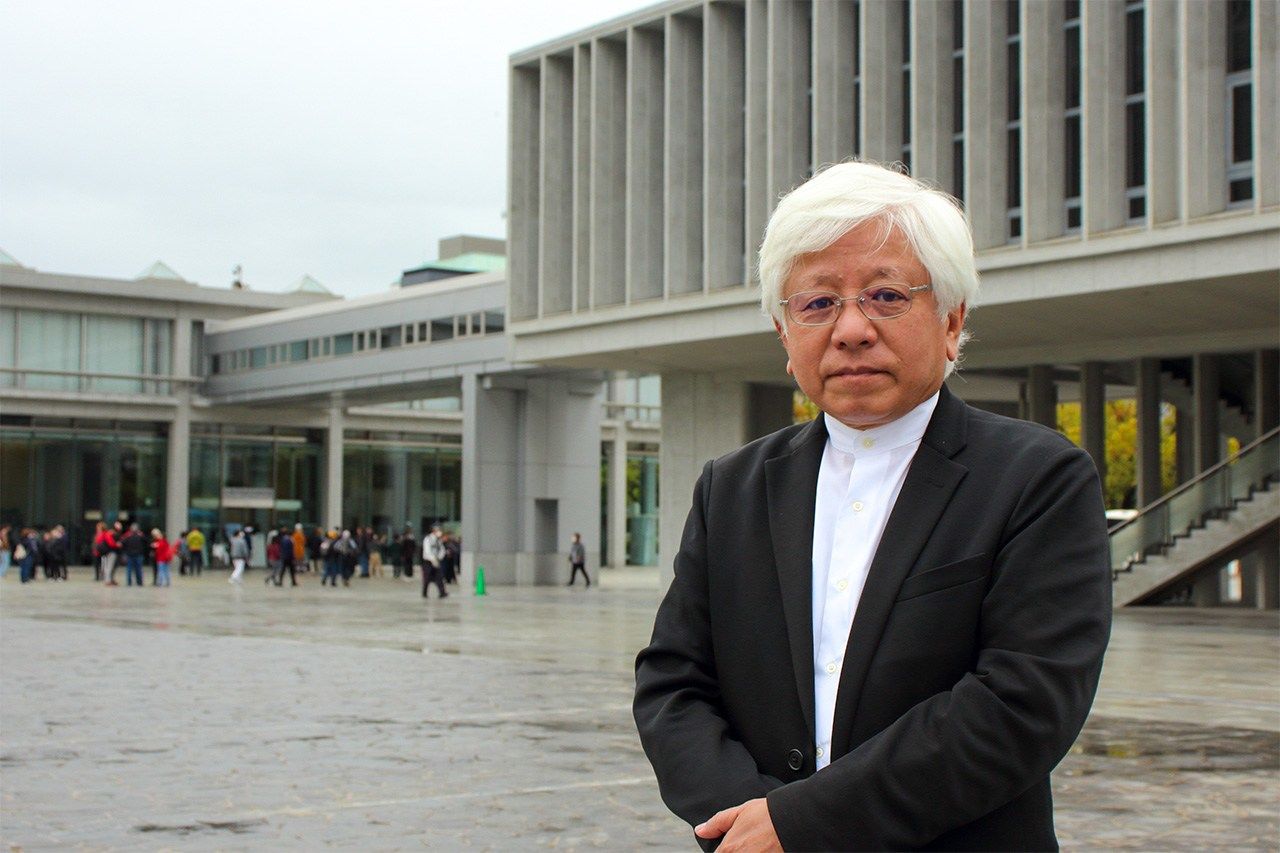
Shiga Kenji in front of the Hiroshima Peace Memorial Museum. (© Ishii Masato)
Japan’s foreign minister in 2016 was Kishida Fumio, today the nation’s prime minister. Kishida led the assembled ministers on a tour of the Peace Memorial Park, where they visited the museum before heading to the cenotaph to lay flowers there. Says Shiga, “Kishida was at the head of our procession, and I brought up the rear. What I saw then was that US Secretary of State John Kerry and UK Foreign Secretary Philip Hammond were starting to lag behind the others. They were clearly fascinated by the exhibits in the museum; I could see that they were engaging thoughtfully with the victims’ belongings and other items on display on a personal level.”
During this April 11 visit, Kerry also wandered off of the agreed-upon course and headed near the A-bomb Dome, too, causing some panic among the security detail. At his press conference that day, he described what he had seen as “a gut-wrenching display.”
“What I felt that day as I accompanied Kerry,” says Shiga, “was that President Obama was going to come to Hiroshima too. I was certain that Kerry would push him to do so. When people view the bombing victims’ belongings and the other exhibits here, they cannot fail to be moved deeply. I hope the leaders will make time in their schedules to visit the museum during their Hiroshima summit. And I hope that they will take their honest responses to that experience back to their own countries, sharing them with their people.”
(Originally written in Japanese. Banner photo: The clothing students died in on display at the Hiroshima Memorial Peace Museum. © Dōune Hiroko)
